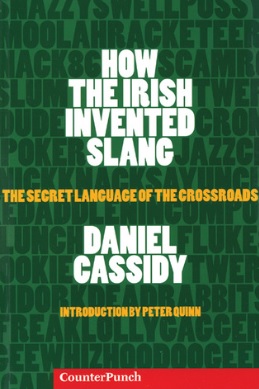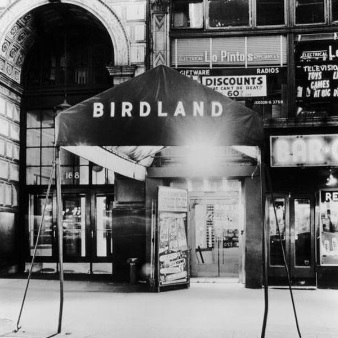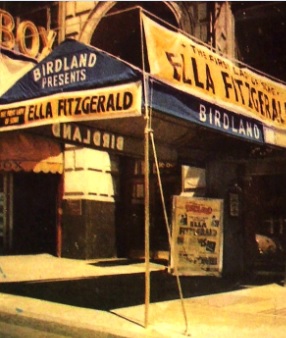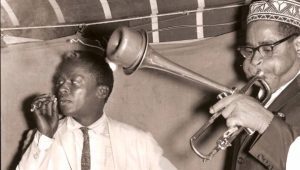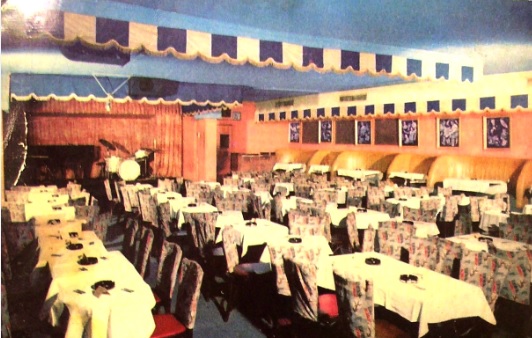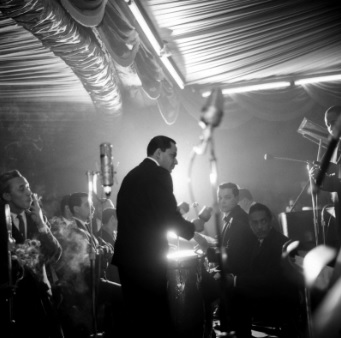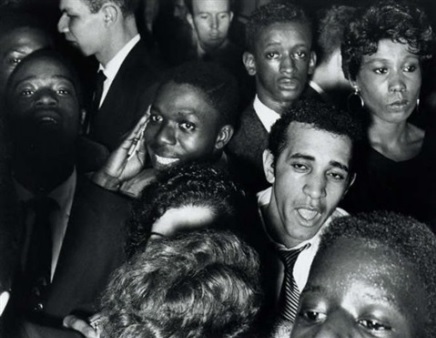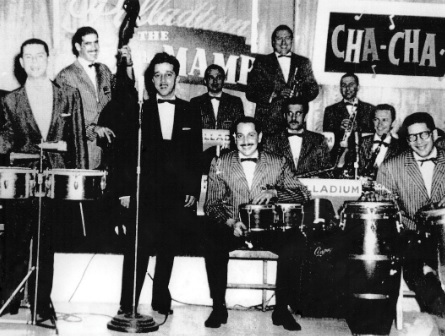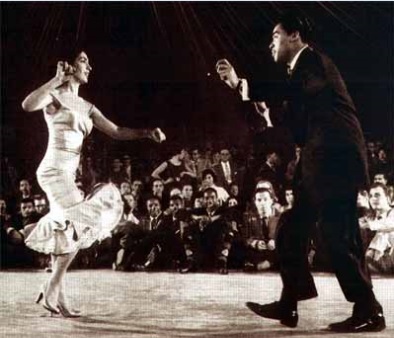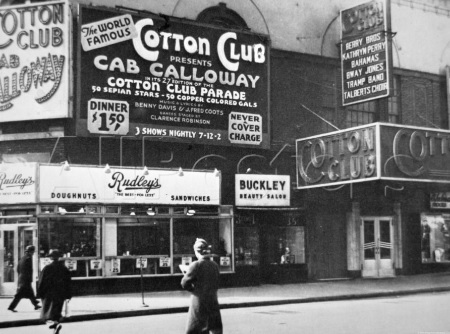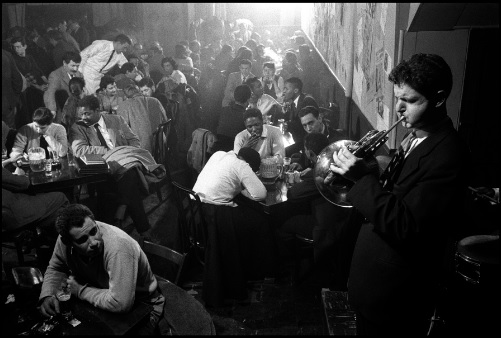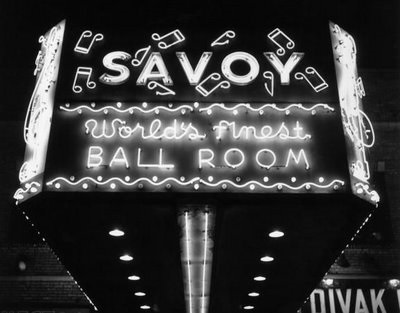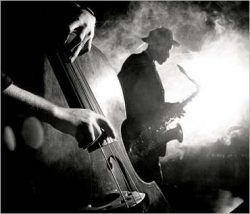Afro-Cuban culture, Blog, Cuba, Cuban Jazz, The Cuba-US connection, Video and audio
Machito’s son, percussionist and bandleader Mario Grillo, recalls the details of his father and his work in a touching and entertaining way.
Lots to learn from this narrative.
Machito and his Afro-Cubans perform for a live studio audience in Japan. The beautiful manners of Japan and Latin America meet.
– Ken McCarthy
Jazz on the Tube
P.S. Our unique programming is made possible by help from people like you. Learn how you can contribute to our efforts here: Support Jazz on the Tube
Thanks.
Go to Cuba with Jazz on the Tube as your guide:
Click here for details
Blog, Cuba, Cuban Jazz, Latin Jazz
Scholars are all about paper.
If it’s not on paper, it didn’t happen.
This presents are problem for future scholarship on the subject of Afro-Cuban and Latin jazz.
There’s a similar scholarship problem in the area of contributions of Gaelic to American English for the same reason.
In both cases, the people involved were so busy with the challenges of simply making a living, they didn’t have time to document and archive and mainstream society wasn’t interested in helping.
Bringing the Irish into this may seem like a tangent and in some ways it is, but not really.
Here’s why…
The word “jazz” is Gaelic.
“What?”, you say. “Jazz is an African word that means ‘sex’ or something.”
Here’s the definitive rebuttal of that nonsense
Jesse Sheidlower, editor at large for the Oxford American English Dictionary, wrote in Slate magazine, in December, 2004: “The African etymology of jazz was fabricated by the New York press agent Walter Kingsley in 1917.”
The truth is the first time that “jazz” ever appeared in print was 1913 in an account in the San Francisco Bulletin about a baseball game written by an Irish-American “Scoop” Gleeson.
Readers didn’t recognize the word so three days later on March 6th, 1913, Gleeson provided an explanation:
“Come on, there Professor, string up the big harp and give us all a tune Everybody has come back to the old town full of the old ‘jazz’ and they promise to knock the fans off their feet with their playing.
“What is the ‘jazz?’ Why, it’s a little of that ‘old life,’ the ‘gin-i-ker,’ the ‘pep,’ otherwise known as the enthusiasalum. A grain of ‘jazz’ and you feel like going out and eating your way through Twin Peaks. It’s that spirit which makes ordinary players step around like Lajoies and (Ty) Cobbs
“‘Hap’ Hogan gave his men a couple of shots of ‘near-jazz’ last season and look what happened — the Tigers became the most ferocious set of tossers in the league. Now the Seals have happened upon great quantities of it in the quiet valley of Sonoma and they’re setting the countryside on fire.”
“Pep” was a very popular word in that era, but what about “gin-i-ker?”
“Gin-i-ker” is the phonetic spelling for the Gaelic phrase “Tine Caor” which means “raging heat and lightening.”
“Tine” is the “fire” part of the phrase and it’s pronounced “Jin-eh” or “chin eh”
The Gaelic word “teas” is related to “tine”. It means “heat of the highest temperature.” In human emotional terms that would mean “hot”, “exciting”, “passionate.”
And in Gaelic the word “teas” is pronounced JASS or CHASS.
The adjective “Teasai” in Gaelic is pronounced “JASSY” and means “hot, warm, passionate, exciting, fervent, enthusiastic, feverish, angry.”
After it’s initial coining, the word “jazz” became a local verbal phenomenon in San Francisco.
In fact, an article was published it in the S.F. Bulletin on April 5, 1913 written by Ernest Hopkins: “In Praise of “Jazz” A Futurist Word Which Has Just Joined the Language.”
“Jazz” jumped the Bay and appeared in The Oakland Tribune on October 4th of that same year.
How did it get to New Orleans and the rest of the country?
That’s easy.
Every port city in the US, New Orleans included, was packed with native Gaelic speakers and first generation Irish-Americans. Many worked the docks. Many went to sea.
Many other “mysterious” slang American words come from Gaelic.
Here’s a very short list:
First the American slang, then the Gaelic root, then the Gaelic meaning.
Slum = ‘s slom e = “It’s bleak”
Cop = ceapaim = “I catch”
Racket = reacaireacht = “dealing, selling”
You dig? = Duigeann tú = “Do you understand?”
Scam = ’S cam é” = “trick or deception”
Scramm = “scaraim” = “I get away.”
“Say uncle!” = “anacal” = mercy
Buddy = “bodach” = a healthy, young man
Geezer = “gaosmhar” = wise person
Dude = “dúid” = a foolish-looking fellow based on his clothing choices
Gimmick = “camag” = trick or deceit, or a hook or crooked stick
Longshoreman = loingseoir = a maritime worker
A lot of otherwise untraceable American slang words related to labor, hardship, crime, gambling, violence and other real world, gritty aspects of life appear to have Gaelic origins.
When he died, Alex Haley of “Roots” fame was working on a book that showed the close relations between early Irish immigrants and Afro-Americans.
They lived in the same neighborhoods, worked together, dated, married, and had kids together.
What were Africans called in Liverpool in old days? “Smoked Irishmen.”
Most of the Irish who came to the US in the 19th century were from rural areas. They spoke their own language and lived a life that was much closer to tribal than modern. They were impoverished and discriminated against.
Signs on stores: “No Irish or dogs” and want ads that stated “No Irish need apply” were a reality.
In his research Haley discovered that Billy Holiday and Ella Fitzgerald had some Irish blood as did Muhammad Ali and Jim Hendrix.
History is a lot more complicated and rich than we know.

– Ken McCarthy
Jazz on the Tube
P.S. Our unique programming is made possible by help from people like you. Learn how you can contribute to our efforts here: Support Jazz on the Tube
Thanks.
Go to Cuba with Jazz on the Tube as your guide:
Click here for details
Blog, Cuba, Latin Jazz, The Cuba-US connection, Video and audio
For those who missed it, Birdland, the shrine of bebop, and the Palladium Ballroom, the shrine of Latin jazz, were just a block away from each other.
The original Birdland opened December 15, 1949 at 1678 Broadway just north of West 52nd Street and closed in 1965.
The Palladium Ballroom opened in 1948 on the corner of 53rd Street and Broadway in New York City and closed May 1, 1966.
Musicians and audience members went back and forth between the two nightspots.
Jazzman Slim Gaillard and Tito Puente reminisce about the heyday – and then get down to a jam.
Note: Don’t got looking for either of these places. They’re gone, but here’s what they looked like.
The original Birdland
 The front door
The front door Ella Fitzgerald in the house
Ella Fitzgerald in the house A cool spot
A cool spot Celebrity hangout
Celebrity hangout The interior
The interior
The original Palladium Ballroom
 Tito Rodriguez on the bandstand
Tito Rodriguez on the bandstand The Crowd
The Crowd Tito Puente and Ray Baretto
Tito Puente and Ray Baretto Dancers
Dancers
Other famous joints
 Cotton Club
Cotton Club Five Spot
Five Spot Savoy Ballroom
Savoy Ballroom The dance floor at the Savoy
The dance floor at the Savoy– Ken McCarthy
Jazz on the Tube
P.S. Our unique programming is made possible by help from people like you. Learn how you can contribute to our efforts here: Support Jazz on the Tube
Thanks.
Go to Cuba with Jazz on the Tube as your guide:
Click here for details
Afro-Cuban culture, Blog, Cuba, Latin Jazz, The Cuba-US connection, Video and audio
From Wikipedia:
Santamaría learned rumba as a kid in the streets of Havana’s Jesús María barrio.
He reminisced: “In the neighborhood where I came from we had all kinds of music, mostly from Africa. We did not leave it alone; we changed it our way. The music we made dealt with religion and conversation. The drum was our tool and we used it for everything.”
Afro Blue (a Mongo Santamaria composition)
Personnel on Afro Blue
Mongo Santamaria, congas
Bobby Sanabria, drums
Sal Santamaria, percussion
E.J. Allen, trumpet
Sam Furnace, tenor saxophone
Tony Hinson, baritone saxophone
Bob Quaranta, piano
Eddie Resto, bass
Afro Blue – The John Coltrane version
More from Mongo
Tracks:
1. Perez Prado – Mambo del 65 – Mongo on congas, first time he was recorded on the instrument
2. Tito Puente – Four Beat Mambo – Mongo with Willie Bobo, and Patato
3. Mongo Santamaria’s Afro-Cuban Drums
4. Cal Djader Quintet – Afro-Blue – Tune with and by Mongo Santamaria
5. Mongo Santamaria – Mazacote – With Willie Bobo, Al McKibbon (Mongo on bongo)
6. Mongo Santamaria – Canta Bajo – Mongo Introduces La Lupe
7. Mongo Santamaria – Canto Abacua – With Justo Betancourt
– Ken McCarthy
Jazz on the Tube
P.S. Our unique programming is made possible by help from people like you. Learn how you can contribute to our efforts here: Support Jazz on the Tube
Thanks.
Afro-Cuban culture, Blog, Cuba, Latin Jazz, Puerto Rico, The Cuba-US connection, Video and audio
When you talk about Cuban music, you have to talk about Puerto Rico and the Bronx too.
This video is a classic example why.
From a concert recorded in Puerto Rico in 1998.
Andy Gonzalez – bass, The Bronx (Puerto Rico)
Jerry Gonzalez – trumpet, The Bronx (Puerto Rico)
Ivan Renta – tenor sax, Puerto Rico
Luis Perdomo – piano, Venezuela
Pedrito Martinez – congas, Cuba
Jerry Gonzalez founded the The Fort Apache Band, which included his brother Andy, one of the great Latin jazz innovators of all time.
– Ken McCarthy
Jazz on the Tube
Blog, Cuba, The Cuba-US connection
Every year, Jazz at Lincoln Center hosts the equivalent of “Woodstock” for high school jazz bands.
It’s called Essentially Ellington and in a word it’s GREAT.
The bad news is you can’t get tickets. It’s for the bands only.
The good news is Jazz at Lincoln Center video streams the entire three day program live and later post videos to YouTube.
For the first year ever, a band from Cuba participated. Directed by Camilo Moreira.
The band wasn’t one of the three finalists, but some of its members were recognized for individual excellence.
They were:
– Baritone Saxophone: JORGE SERGIO RAMIREZ
– Trumpet: DAVID ARMANDO NAVARRO
– Tenor Saxophone: LUIS MIGUEL SANCHEZ
The band’s trumpet section was also recognized
We don’t have any video of them playing (yet), but to get an idea of the quality of the playing at this event, check out Newark Academy playing “Jack the Bear.”
Newark Academy Jazz Band at Essentially Ellington 2017
– Ken McCarthy
Jazz on the Tube
P.S. Our unique programming is made possible by help from people like you. Learn how you can contribute to our efforts here: Support Jazz on the Tube
Thanks.

